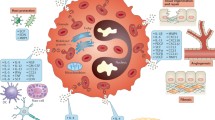Abstract
The ectoparasitic astigmatid mite Psoroptes ovis causes sheep scab, a highly contagious, severe allergic dermatitis associated with damage to the fleece and hide, loss of condition and occasional mortality. The scab lesion is characterized by a massive infiltration of eosinophils that begins very rapidly after infection. This paper reports the finding that mite-derived factors directly enhance the migration of ovine eosinophils in vitro. Significant (p < 0.01) and dose-dependent (r = 0.972 ± 0.018 (SD)) activity was initially identified in whole mite extracts, by comparison with medium controls in an assay based on modified Boyden chambers and ovine bone marrow target cells. Similar pro-migratory activity (p < 0.005; r = 0.928 ± 0.069 (SD)) was detected in washes containing mite excretory/secretory material. By direct comparison with migration ratios (n = 3) for defined chemotactic (rmeotaxin = 3.430 ± 0.360 (SD)) and chemokinetic (rminterleukin-5 = 0.982 ± 0.112 (SD)) stimuli it was determined that the activity in both mite extracts (0.992 ± 0.038 (SD)) and mite washes (0.969 ± 0.071 (SD)) was chemokinetic. Subsequent experiments (n = 3) in which live mites were incorporated directly into the in vitro assay system indicated that they produced factors that significantly (p < 0.001) enhanced eosinophil migration to a degree directly related to mite numbers (r = 0.993 ± 0.005 (SD)). The identity of the factor(s) responsible is uncertain, but their presence suggests that mites may be capable of directly activating eosinophils in vivo, and raises the possibility that mites could directly influence, perhaps even initiate, the rapid early tissue eosinophilic response observed in experimental sheep scab infections.
Similar content being viewed by others
Abbreviations
- FCS:
-
fetal calf serum
- HBSS:
-
Hanks balanced salt solution
- IL-5:
-
interleukin-5
- IMDM:
-
Iscove’s modified Dulbecco’s medium
- PBS:
-
phosphate-buffered saline
- r :
-
correlation coefficient
- rm:
-
recombinant murine
- SBMC:
-
sheep bone marrow cells
- SD:
-
standard deviation
- SDS:
-
sodium dodecyl sulphate
- SEM:
-
standard error of the mean
References
Bates, P.G., 1997. The pathogenesis and ageing of sheep scab lesions—Part 1. State Veterinary Journal, 7, 11–15
Beetham, P.K., 1997. Sheep scab mite (Acari: Psoroptidae): general morphology and immunocytochemistry using serum from infested animals. Annals of the Entomological Society of America, 90, 202–207
Bellworthy, S., Groves, B. and Bates, P., 1997. Clinical complications of sheep scab and the effect of corticosteroids on clinical signs and lesion development. Proceedings of the Sheep Veterinary Society, 21, 107–112
Butterworth, A.E., 1984. Cell-mediated damage to helminths. Advances in Parasitology, 23, 143–235
Butterworth, A.E. and Thorne, K.J.I., 1993. Eosinophils and parasitic diseases. In: H. Smith and R.M. Cook (eds), Immunopharmacology of Eosinophils (Academic Press, London), 119–150
Dombrowicz, D. and Capron, M., 2001. Eosinophils, allergy and parasites. Current Opinion in Immunology, 13, 716–720
Haig, D.M., Blackie, W., Huntley, J., Mackellar, A. and Smith W.D., 1988. The generation of ovine bone marrow-derived mast cells in culture. Immunology, 65, 199–203
Jose, P.J., Griffiths-Johnson, D.A., Collins, P.D., Walsh, D.T., Moqbel, R., Totty, N.F., Truong, O., Hsuan, J.J. and Williams, T.J., 1994. Eotaxin: a potent eosinophil chemoattractant cytokine detected in a guinea pig model of allergic airways inflammation. Journal of Experimental Medicine, 179, 881–887
Klion, A.D. and Nutman, T.B., 2004. The role of eosinophils in host defense against helminth parasites. Journal of Allergy and Clinical Immunology, 113, 30–37
Martin, L.B., Kita, H., Leiferman, K.M. and Gleich, G.J., 1996. Eosinophils in allergy: role in disease, degranulation and cytokines. International Archives of Allergy and Immunology, 109, 207–215
Mathieson, M.R.F., 1995. An investigation of Psoroptes ovis, the sheep scab mite, with a view to developing an in vitro feeding system, (PhD thesis, University of Bangor, Wales)
Meeusen, E.N.T. and Balic, A., 2000. Do eosinophils have a role in the killing of helminth parasites? Parasitology Today, 16, 95–101
Munitz, A. and Levi-Schaffer, F., 2004. Eosinophils: ‘new’ roles for ‘old’ cells. Allergy, 59, 268–275
Palframan, R.T., Collins, P.D., Severs, N.J., Rothery, S., Williams, T.J. and Rankin, S.M., 1998. Mechanisms of acute eosinophil mobilization from the bone marrow stimulated by interleukin 5: the role of specific adhesion molecules and phosphatidylinositol 3-kinase. Journal of Experimental Medicine, 188, 1621–1632
Pettit, D., Smith, W.D., Richardson, J. and Munn, E.A., 2000. Localisation and characterization of ovine immunoglobulin within the sheep scab mite, Psoroptes ovis. Veterinary Parasitology, 89, 231–239
Pruett, J.H., Temeyer, K.B., Fisher, W.F., Beetham, P.K. and Kuntz, S., 1998. Evaluation of natural Psoroptes ovis (Acarina: Psoroptidae) soluble proteins as candidate vaccine immunogens. Journal of Medical Entomology, 35, 861–871
Rainbird, M.A., Macmillan, D. and Meeusen, E.N., 1998. Eosinophil-mediated killing of Haemonchus contortus larvae: effect of eosinophil activation and role of antibody, complement and interleukin-5. Parasite Immunology, 20, 93–103
Stevenson, L.M. and Jones, D.G., 1994 Cross-reactivity amongst recombinant haematopoietic cytokines from different species for sheep bone marrow eosinophils. Journal of Comparative Pathology, 111, 99–106
Van den Broek, A.H. and Huntley, J.F., 2003 Sheep scab: the disease, pathogenesis and control. Journal of Comparative Pathology, 128, 79–91
Van den Broek, A.H., Huntley, J.F., Machell, J., Taylor, M., Bates, P., Groves, B. and Miller, H.R., 2000. Cutaneous and systemic responses during primary and challenge infestations of sheep with the sheep scab mite. Psoroptes ovis. Parasite Immunology, 22, 407–414
Walsh, G.M., 1999. Advances in the immunobiology of eosinophils and their role in disease. Critical Reviews in Clinical Laboratory Sciences, 36, 453–496
Wikel, S.K., 1984. Immunomodulation of host responses to ectoparasite infestation—an overview. Veterinary Parasitology, 14, 321–339
Williams, T.J., 2004 The eosinophil enigma. Journal of Clinical Investigation, 113, 507–509
Author information
Authors and Affiliations
Corresponding author
Rights and permissions
About this article
Cite this article
Wildblood, L.A., Jones, D.G. Stimulation of the In Vitro Migration of Ovine Eosinophils by Factors Derived from the Sheep Scab Mite, Psoroptes ovis . Vet Res Commun 31, 197–206 (2007). https://doi.org/10.1007/s11259-006-3429-7
Accepted:
Published:
Issue Date:
DOI: https://doi.org/10.1007/s11259-006-3429-7




